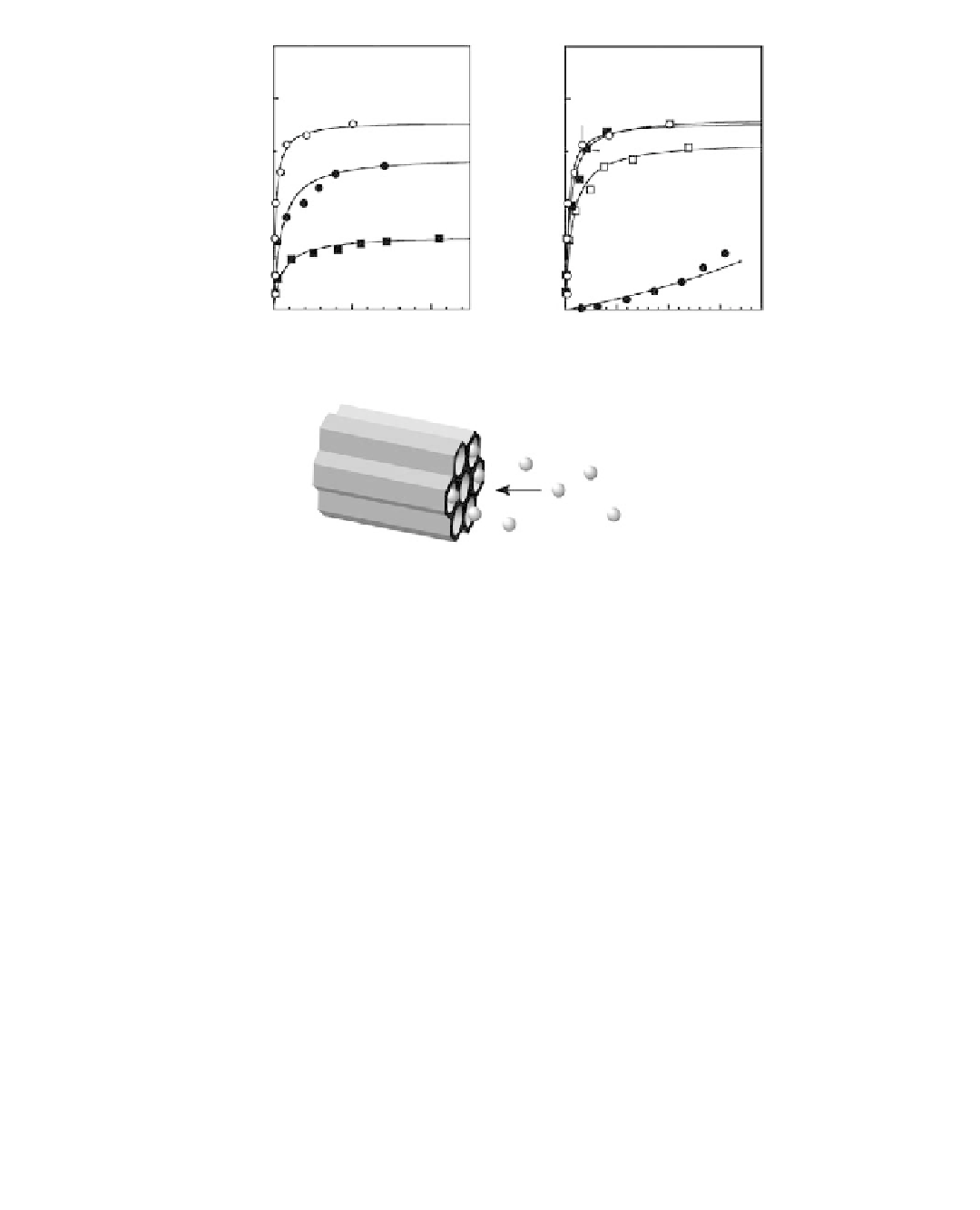Biomedical Engineering Reference
In-Depth Information
(A)
(B)
40
40
(c)
(c)
(b)
(b)
(a)
(a)
20
20
(d)
0
0
0
100
Lysozyme (
200
0
50
100
150
µ
M)
Lysozyme (
µ
M)
FIGURE 12.15
(A) Adsorption isotherms of lysozyme onto mesoporous silica materials at pH 10.5:
(a) C
12
-MCM-41, (b) C
16
-MCM-41, and (c) SBA-15. (B) Adsorption isotherms of lysozyme onto SBA-15 at
various pH conditions: (a) pH 6.5, (b) pH 9.6, (c) pH 10.5, and (d) pH 12.0. (Reprinted from Vinu, A., et al.,
J. Phys. Chem. B
, 108, 7323, © American Chemical Society. With permission.)
molecules tend to be compacted at zero net charge. The area per molecule of lysozyme in solution
having a pH near the isoelectric point was reported to be similar to that in its crystallized state
(13.5 nm
2
), whereas it is 26.6 nm
2
at a solution pH of 4 [108]. Smaller occupied area in the former
case may result in larger monolayer adsorption capacity.
The structural stability of the mesoporous silica adsorbent under aqueous condition is rela-
tively poor because of the hydrolysis of their siloxane bridges. Therefore, mesoporous materials,
which are much stabler than mesoporous silica, have to be applied for the immobilization of
biomaterials in application requiring usage under rather harsh conditions. The mesoporous car-
bon CMK-3 families prepared through carbonization of carbon source using mesoporous silica
as removable SBA-15 replicas (see Figure 12.16A), would be powerful candidates as adsorbents
for protein immobilization, because mesoporous carbon has perfect stability against hydrolytic
aqueous conditions. Adsorption of lysozyme onto various mesoporous carbon materials was
investigated by Vinu and coworkers, in which four kinds of pore-engineered CMK materials,
CMK-3-150,
CMK-3-130,
CMK-3, and CMK-1, were used as adsorbents [109]. The obtained
adsorption capacities are plotted as functions of three kinds of pore structural parameters, specifi c
surface area (graph (a) in Figure 12.16B), specifi c pore volume (graph (b) in Figure 12.16B), and
pore diameter (graph (c) in Figure 12.16B). The adsorption capacity did not show clear relevance
with the specifi c surface area. In contrast, positive correlation was obviously observed between
the adsorption capacity and the pore volume. This relation sounds reasonable from the viewpoint
of pore fi lling by the lysozyme molecules. Unavoidable negative deviation from the expected
line can be detected for the adsorption capacity to the mesoporous carbon with the smallest pore
diameter (CMK-1). This result would be explained by the size exclusion effect at mesoporous

